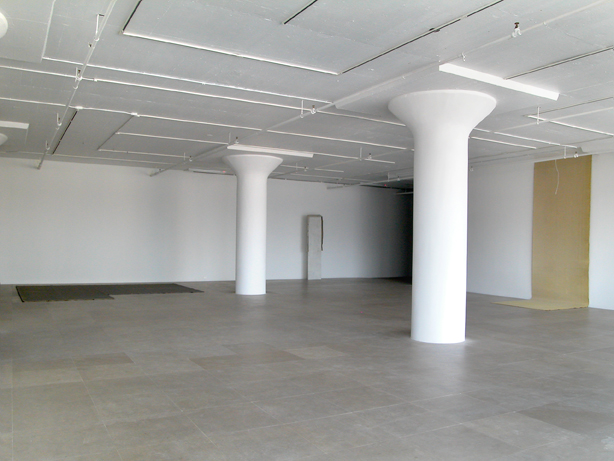Gedi Sibony
Gedi Sibony is a man of few words—but he’s an artist of many materials. In fact, his main thrust seems to be filling voids, taking over spaces, and letting raw objects do the hard work of defining themselves and the rooms they inhabit. The 35-year-old New York artist assembles sculptures out of bare-boned refuse-plywood, cardboard, garbage bags, vinyl—but the results aren’t about overaccumulation. Like a raw, much more ephemeral DIY version of high minimalism, Sibony’s aim is space, balance, and open-ended strategies. His works are more poems than speeches. They seem very solemn and patient in a young New York art world out to over-shock and intimidate. On January 23, the Contemporary Art Museum St. Louis opens an exhibition of the New York-native’s work.
Christopher Bollen: A lot of artists who use “castaway material” seem to relish its junklike effects. Yours seem very pure and clean in many ways. Is this intentional?
Gedi Sibony: I use the objects to reveal spaces.
I want them to be integrated.
CB: Where do most of your materials come from?
GS: My studio.
CB: When you are working on a sculpture, are there any constraints on how things fit together or operate? Is there a set of formal rules that you work with?
GS: I don’t really work on a sculpture. I mostly work on my studio, controlling the light, partitioning spaces, making it enjoyable to walk around in, dealing with all the stuff I already have. And gradually things get separated into characters and sequences. For the shows, things do fit together and operate in very particular ways.
I don’t remember the last time I hated anything.Gedi Sibony
CB: Obviously, spatial concerns are paramount in your work. Are your sculptures site specific, or can they go anywhere?
GS: They’re like a traveling circus-adapting.
CB: What was the first artwork you made?
GS: When I was in first grade I made a small black wooden bat with a coping saw. The wings were very different. I have a deep knowledge of that asymmetry because it reflects my own. I made it the same way I do everything. And one of the two little eyeholes provides a backstage for the nail that suspends it on the wall.
CB: How do you judge the success of an individual piece?
GS: It’s not a judgment as much as a feeling.
CB: Do you see yourself falling in line with the minimalists of the ’60s and ’70s?
GS: I don’t focus historically in that way. My thinking is more call-and-response.
CB: I like your titles. How do you come up with them? Some are pretty funny, like Its Origins Justify Its Oranges. Note, there isn’t even the color orange in the work.
GS: The titles are really fun for me. It becomes a language game cloaked in the rhythm of sounds or the other way around. And it has to be accurate.
CB: What do you hate about the art world?
GS: I don’t remember the last time I hated anything.







